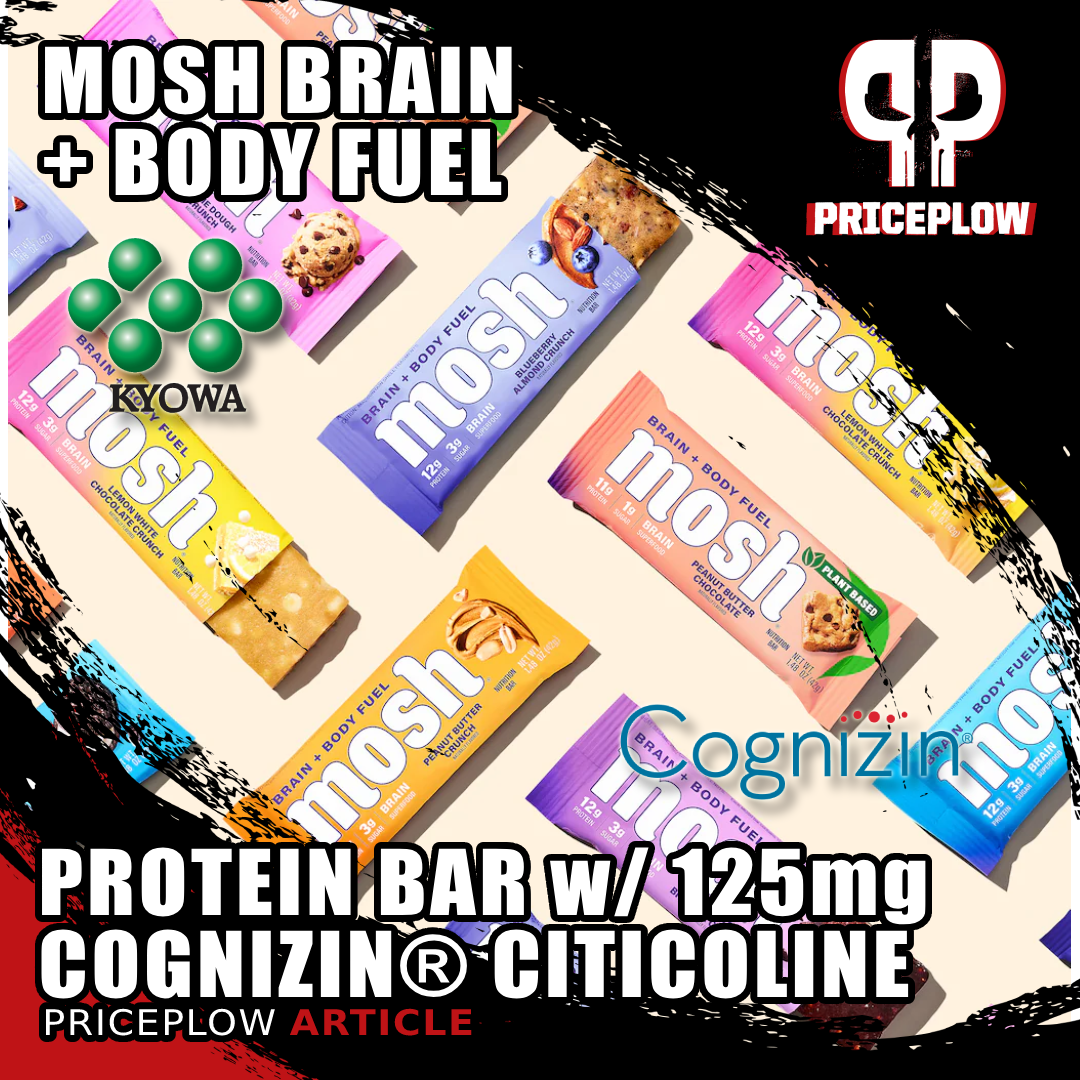
MOSH Brain + Body Fuel Protein Bar is a standout functional food product with 125mg Cognizin® Citicoline. Featuring natural sweeteners and a Brain Blend with lion's mane and KSM-66, it's perfect for satisfying your sweet tooth while optimizing both physical and mental performance.
Functional foods are the hottest product category on the market, with brands releasing new cookies, cakes, bars, and brownies worldwide. Protein bars have been around for a while, but we're now entering a golden era for flavoring, texture, and finally, novel ingredients.
At SupplySide West 2023, we hosted an entire podcast episode (#118) about branded ingredients at the Kyowa Hakko USA booth. During the Q&A portion, PricePlow's Founder, Mike Roberto, asked why there weren't more novel ingredients in functional foods. One answer was that "average consumers don't care".
However, our team isn't convinced that's the right answer. As consumers become more interested in what they put into their bodies, the trend towards transparency and efficacy will only grow.
Nearly a year later, there's one new bar that's proving us right, thanks to its inclusion of quality, nootropic ingredients.
MOSH Brain + Body Fuel Protein Bar, with 125mg Cognizin® Citicoline

Kyowa SSW 2023 Panel: Branded Ingredients and Collaborative Competition with Dan, Joey, and Chris of Ghost, Glaxon, and Nutrabolt
Fresh off the presses, the MOSH Bar is one of the most exciting new functional food products we've seen this year. With 12 grams of protein and good, natural sweeteners like monk fruit extract, this soft, gooey protein bar is the perfect choice for satisfying a sweet tooth without risking your macros.
What makes the MOSH Bar particularly special is its Brain Blend, which includes ingredients like lion's mane, KSM-66, and Cognizin® Citicoline, a top-tier form of choline from Kyowa Hakko USA. For those looking to optimize both physical and mental performance, the MOSH Bar is the way to go.
We're going to dive into how MOSH Brain + Body Fuel Protein Bar works, but first, let's check PricePlow for good MOSH deals, and check out our video review of the new product:
MOSH Keto Protein Bar (Brain + Body Fuel) – Deals and Price Drop Alerts
Get Price Alerts
No spam, no scams.
Disclosure: PricePlow relies on pricing from stores with which we have a business relationship. We work hard to keep pricing current, but you may find a better offer.
Posts are sponsored in part by the retailers and/or brands listed on this page.
This area is reserved for Team PricePlow's upcoming videos.
Subscribe to our channel and sign up for notifications so you catch it when it goes live!
MOSH Brain + Body Fuel Protein Bar – Nutrition Facts
Each bar contains the following ingredients:
-
Calories: 180
-
Total Fat: 10g
-
Saturated Fat: 1.5g
-
-
Total Carbohydrate: 18g
-
Dietary Fiber: 7g
-
Total Sugars: 3g
-
Added Sugars: 2g
-
-
Sugar Alcohol: 4g
-
-
Protein: 12g
MOSH Bar – Ingredients
-
-
Protein Blend
The MOSH Bar's Protein Blend contains three types of protein: whey protein isolate, whey protein concentrate, and grass fed milk protein isolate. All three are derived from cow's milk, with whey protein isolate having the highest protein content by weight at 90%. Whey protein concentrate contains between 35-80% protein. Milk protein isolate contains both whey protein and casein to add a bit of balance to the mix.
Whey protein is one of the best forms of protein on the market due to its high bioavailability, and because it contains all nine essential amino acids.[1,2] It has been demonstrated to improve both strength and body composition wen supplemented alongside a solid exercise and diet program.[3-6]
-
Brain Blend
MOSH Bars stand out for their inclusion of the following brain-boosting ingredients:
Cognizin® Citicoline is dubbed the The Brain Choline not just because it provides choline, but because it also supplies cytidine, which is also needed for the synthesis of phosphatidylcholine
-
Organic Lion's Mane
Lion's Mane, scientifically known as Hericium erinaceus, is an edible mushroom renowned for its healing properties in traditional Chinese and Japanese medicine.[7-9]
Lion's Mane is rich in vitamins and minerals and contains compounds like erinacines, erinacea lactones, glycoproteins, hericerins, and polysaccharides (beta-glucans).[10] These bioactive compounds are believed to contribute to its wide range of benefits, such as:[10,11]
- Anti-aging
- Antibiotic
- Anticaner
- Antioxidant
- Cognitive function
- Neuroprotective
- Hepatoprotective
- Glucose control
- Anxiety relief
- Inflammation reduction
- Immune support
Notably, Lion's Mane has gained popularity in the nootropic community for its effects on Nerve Growth Factor (NGF), a protein crucial for the survival and function of nerve cells. By increasing NGF levels, Lion's Mane enhances cognition, promotes neuronal growth, and offers neuroprotective benefits. This makes it an intriguing addition to any brain-boosting supplement regimen.
Lion's Mane is celebrated for its ability to improve brain function. Clinical studies have shown that it enhances memory and recall, particularly in individuals with mild cognitive decline.[12] Additionally, animal studies suggest that Lion's Mane can stimulate nerve regeneration and offer neuroprotective benefits, such as enhancing acetylcholine levels[13] and reducing amyloid beta plaque buildup.[14] Beyond cognitive benefits, Lion's Mane helps combat anxiety and depression,[15] improves sleep quality,[16] supports glucose regulation,[11] and exhibits anti-aging[10,11] and anti-inflammatory properties.[17-19]
-
Cognizin® Citicoline
The real differentiator of MOSH Bars comes courtesy of Cognizin® citicoline, at a dose of 125mg per bar.
Choline is an essential nutrient that plays a vital role in the synthesis of phospholipid bilayer membranes, which form the outer barrier of all cells in the body.[20] This function alone makes choline indispensable for optimal health and performance. Additionally, choline serves as a precursor to acetylcholine, a neurotransmitter crucial for cognitive processes such as learning and memory consolidation.[21] By increasing acetylcholine synthesis, choline enhances cognitive performance, including intellectual skills and cognitive motor skills like balance and coordination.[22,23]
Cognizin® is a specialized form of choline known as citicoline, a molecule composed of choline and cytidine. Unlike ordinary choline, citicoline is a direct precursor to phosphatidylcholine (PC), a crucial phospholipid for brain health and function.[24] The availability of citicoline is often the rate-limiting factor in PC synthesis.[25] MRI studies have confirmed that citicoline can upregulate PC production.[26] Furthermore, citicoline uniquely promotes the synthesis of acetylcholine, phosphatidylethanolamine, and phosphatidylserine.[26]
Benefits of Cognizin® Citicoline
Cognizin® Citicoline has been extensively researched, with studies demonstrating its wide-ranging benefits:
- Focus and attention[27-30]
- Reduces errors while on task[27,28]
- Brain and cognitive health[27,28,30-32]
- Enhance energy utilization in the brain[26,31,33,34]
- Increase acetylcholine production[29,33,35]
The preferred choline source
When formulating a focus-supplement (or food, in this case), the question becomes, "What should my choline source be?"
Over time, we've consistently found it to be citicoline, also known as CDP-choline. It's the choline source with the best body of research, and it's the most experiential one, as it may support dopamine signaling, and as we recently posited at ISSN 2024, may spare an ATP molecule or two for the rest of your brain.
For more detailed information on Cognizin®, explore our comprehensive article, "Cognizin® Citicoline: The Brain Choline".
-
KSM-66 Ashwagandha
KSM-66 is a trademarked, full-spectrum ashwagandha root extract developed by the leading ingredient supplier, Ixoreal Biomed. This extract is standardized to contain at least 5% withanolides, the primary bioactive constituents.[36] KSM-66 has quickly become one of the most popular forms of ashwagandha on the market due to its rigorous testing for potency, purity, safety, and efficacy.
Ashwagandha, also known as Withania somnifera, is an adaptogenic herb used for centuries in Ayurvedic medicine.[36] Adaptogens are plants that enhance the body's ability to cope with stress by restoring physiological processes to homeostasis.[36] Ashwagandha's effectiveness is attributed to its bioactive constituents, such as withanolides and sitoindosides, which contribute to its wide array of physiological properties.[36]
Ashwagandha Benefits
Ashwagandha is renowned for its numerous health benefits, which include:[36]
- Antioxidant
- Adaptogenic
- Anti-inflammatory
- Antibacterial
- Neuroprotective
- Antifungal
- Immunomodulatory
- Anxiolytic
- Mood-supporting
- Cardioprotective
- Cognitive enhancing
- Anti-stress
Among its many advantages, ashwagandha's ability to reduce stress levels by lowering cortisol is particularly noteworthy. Several studies have shown significant reductions in cortisol levels in individuals supplementing with ashwagandha, highlighting its efficacy in stress management.[36,37]
Beyond stress reduction, ashwagandha has been shown to enhance physical performance. In a study involving 57 healthy young males, those taking 300 milligrams of ashwagandha twice daily experienced a 15% increase in testosterone levels, improved muscle strength, and greater muscle mass growth.[38] Additionally, these individuals reported less exercise-induced muscle damage, indicating better recovery.[38]
Another study by the Indian Red Cross found that ashwagandha supplementation promoted fat loss and improved overall body composition.[39] While more research is needed to fully understand ashwagandha's potential as an ergogenic aid, its impact on muscle growth, recovery, and metabolic rate is promising.[40]
-
-
-
Other Brain Boosting Ingredients
- Flaxseed: Flaxseed, rich in alpha-linoleic acid (ALA),[41] offers protective benefits against cardiovascular disease, high blood pressure, insulin resistance, and inflammation, and shows promise in aiding metabolic health.[42]
- Vitamin B12: Methylcobalamin, a form of vitamin B12 crucial for brain, nervous system function, and red blood cell production, can mitigate neurological issues, fatigue,[43] and megaloblastic anemia,[44,45] particularly benefiting individuals with genetic variations like the MTHFR polymorphism.[46]
- Vitamin D3: Cholecalciferol (vitamin D3) optimizes hormone levels, particularly increasing testosterone in men,[47,48] and protects against numerous health issues such as cardiovascular disease, obesity, depression, and osteoporosis[49,50] by regulating inflammation and blood sugar.
-
Other ingredients and sweeteners
For flavor and texture, MOSH Bars contain almonds, organic agave, vegetable glycerin, erythritol, sunflower lecithin, sea salt, steviol glycosides, monk fruit extract, tapioca starch, and calcium carbonate.
All MOSH Brain + Body Fuel Protein Bar flavors
Check out our up-to-date list of MOSH Bar flavors below:
Recharging Fuel
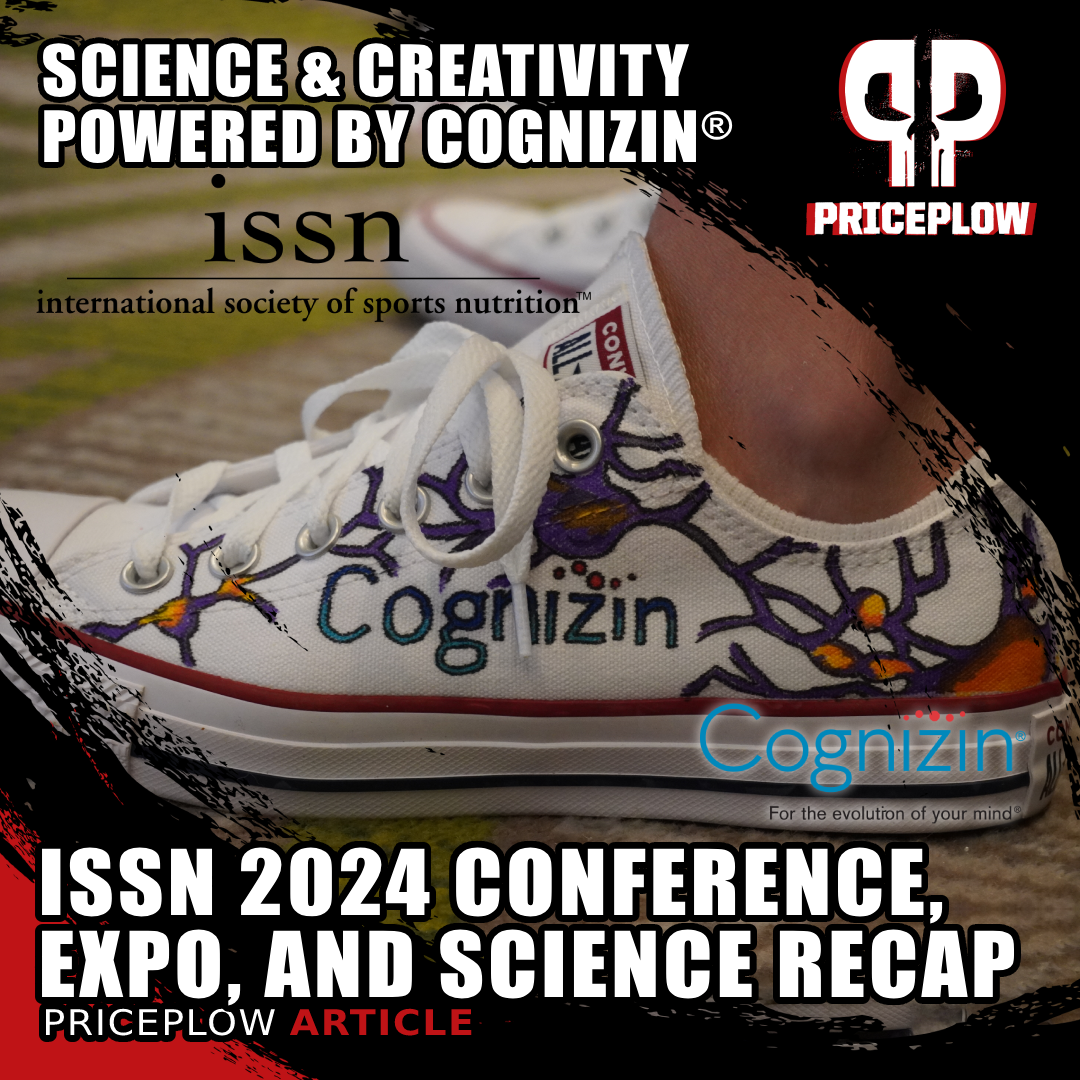
See PricePlow's ISSN 2024 Conference Recap, Powered by Cognizin® Citicoline
While protein powders are top-notch when it comes to convenient macro padding, drinking your calories can get a bit boring. Functional foods are the natural answer – snack foods that have sizable portions of protein and an eye towards more healthy ingredients. Something you can sink your teeth into.
We've been excited about bringing more function into the functional foods space, and MOSH Bar has done it!
While there are many protein bars on the market, few come with the same focus on brain performance. With Cognizin® and other nootropic ingredients, the MOSH Bar is the perfect recharging snack for the midday slump.
MOSH Keto Protein Bar (Brain + Body Fuel) – Deals and Price Drop Alerts
Get Price Alerts
No spam, no scams.
Disclosure: PricePlow relies on pricing from stores with which we have a business relationship. We work hard to keep pricing current, but you may find a better offer.
Posts are sponsored in part by the retailers and/or brands listed on this page.
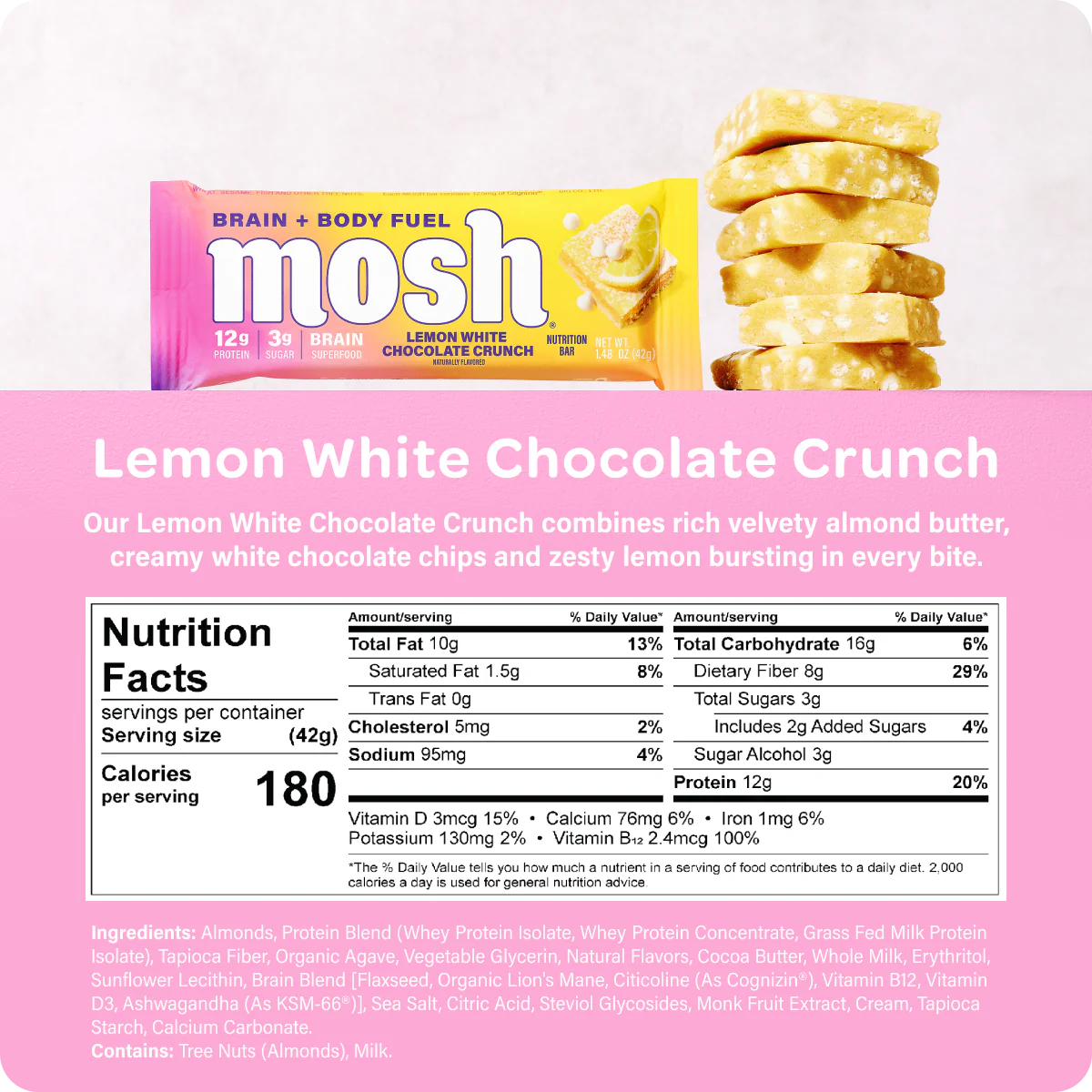
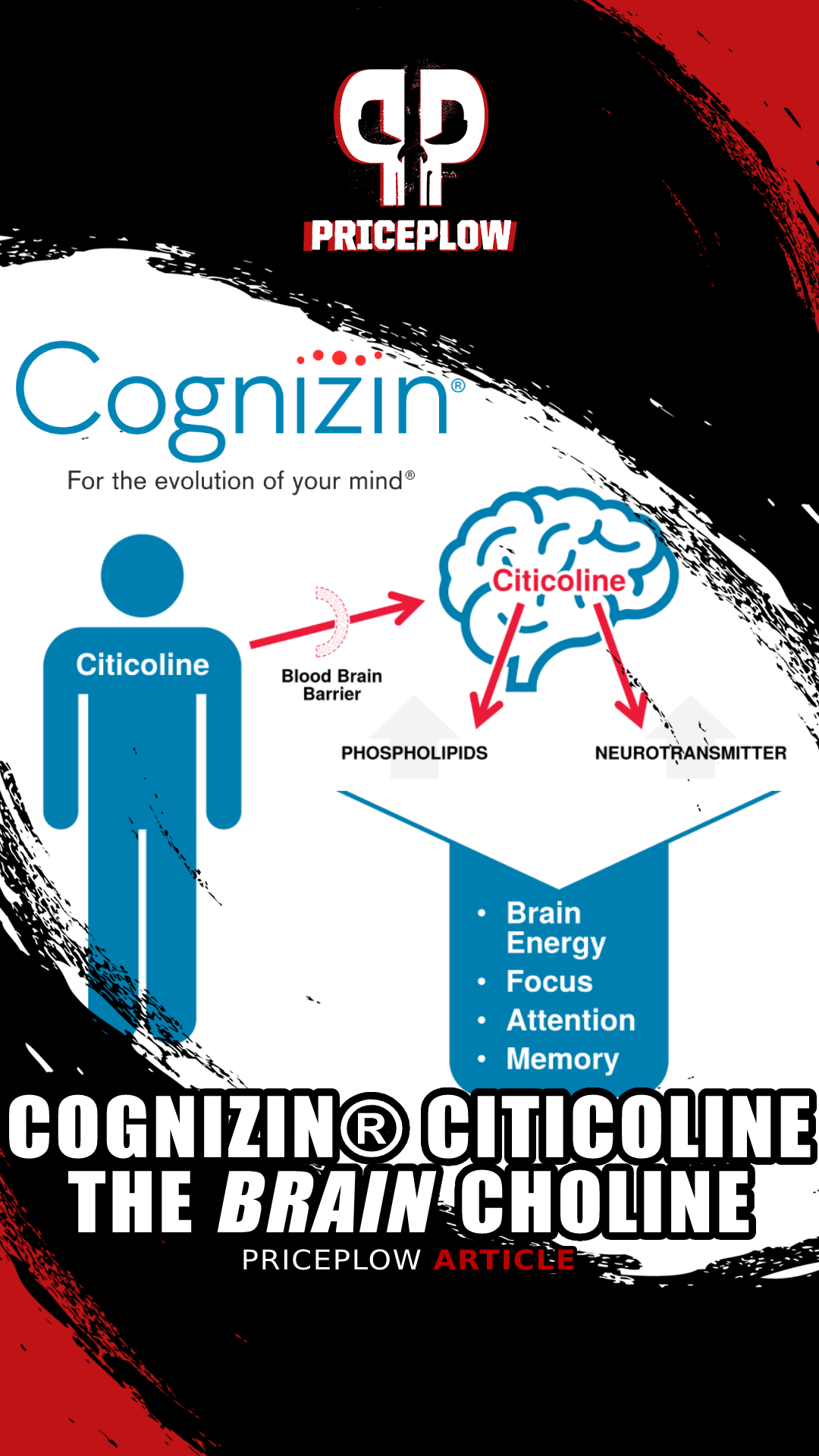
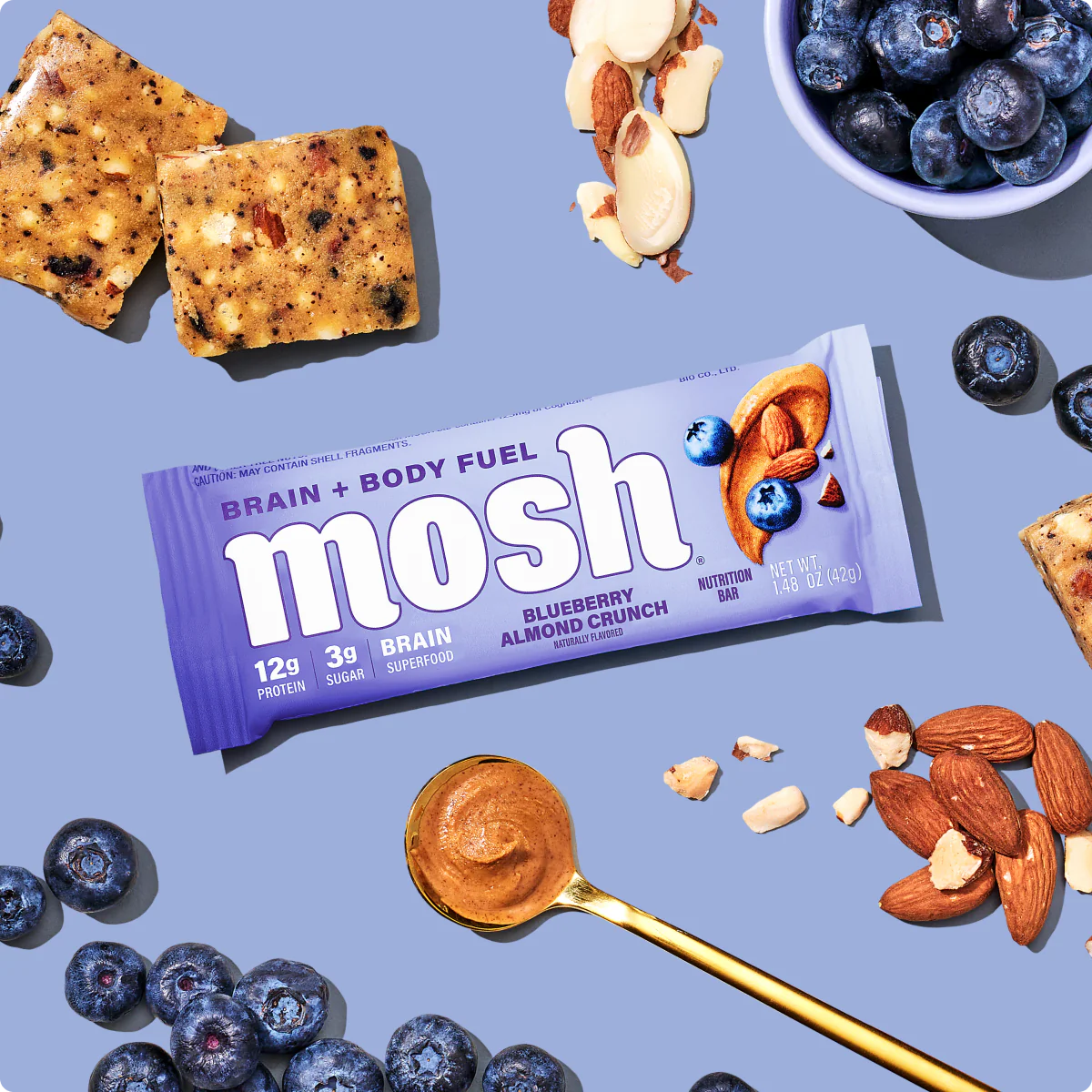
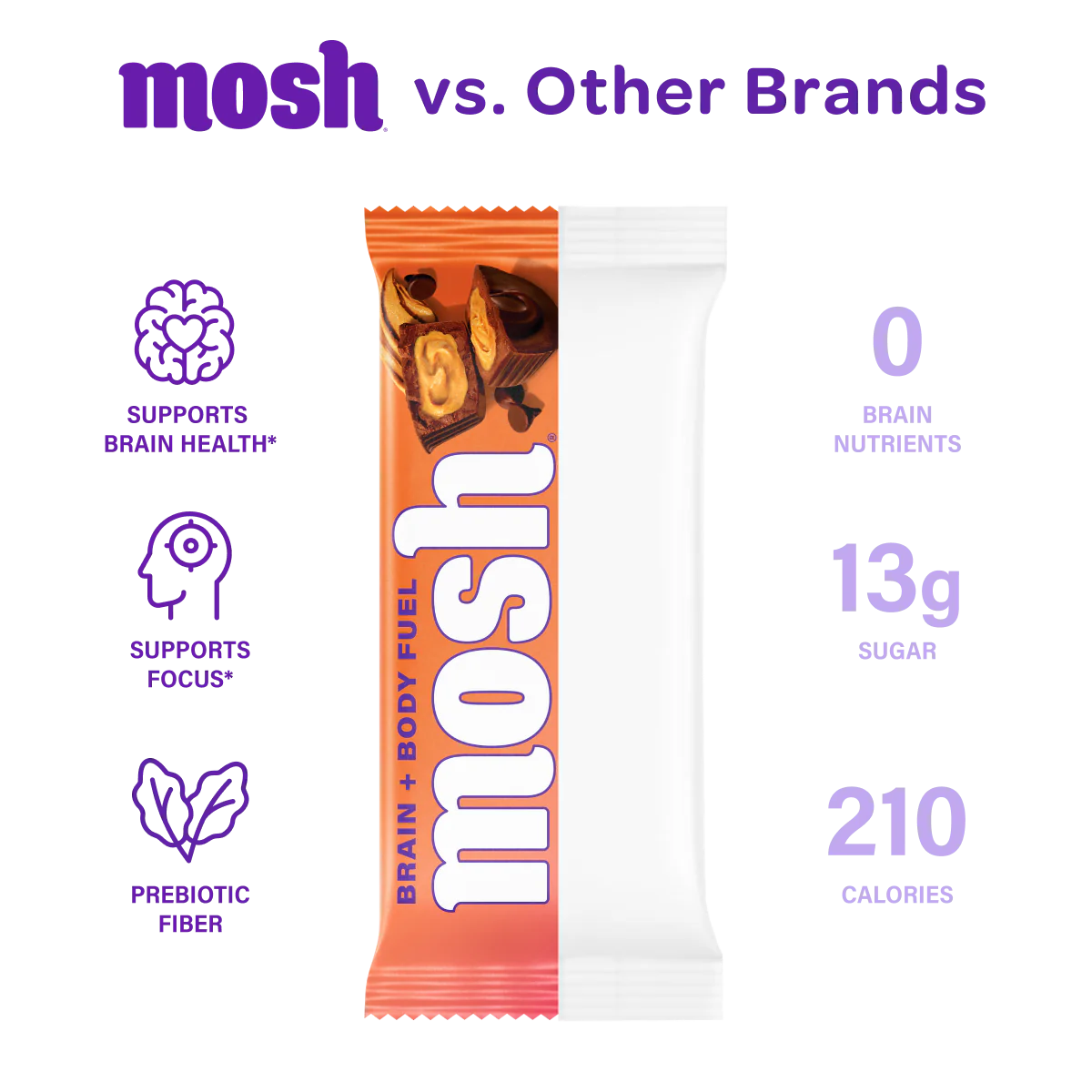
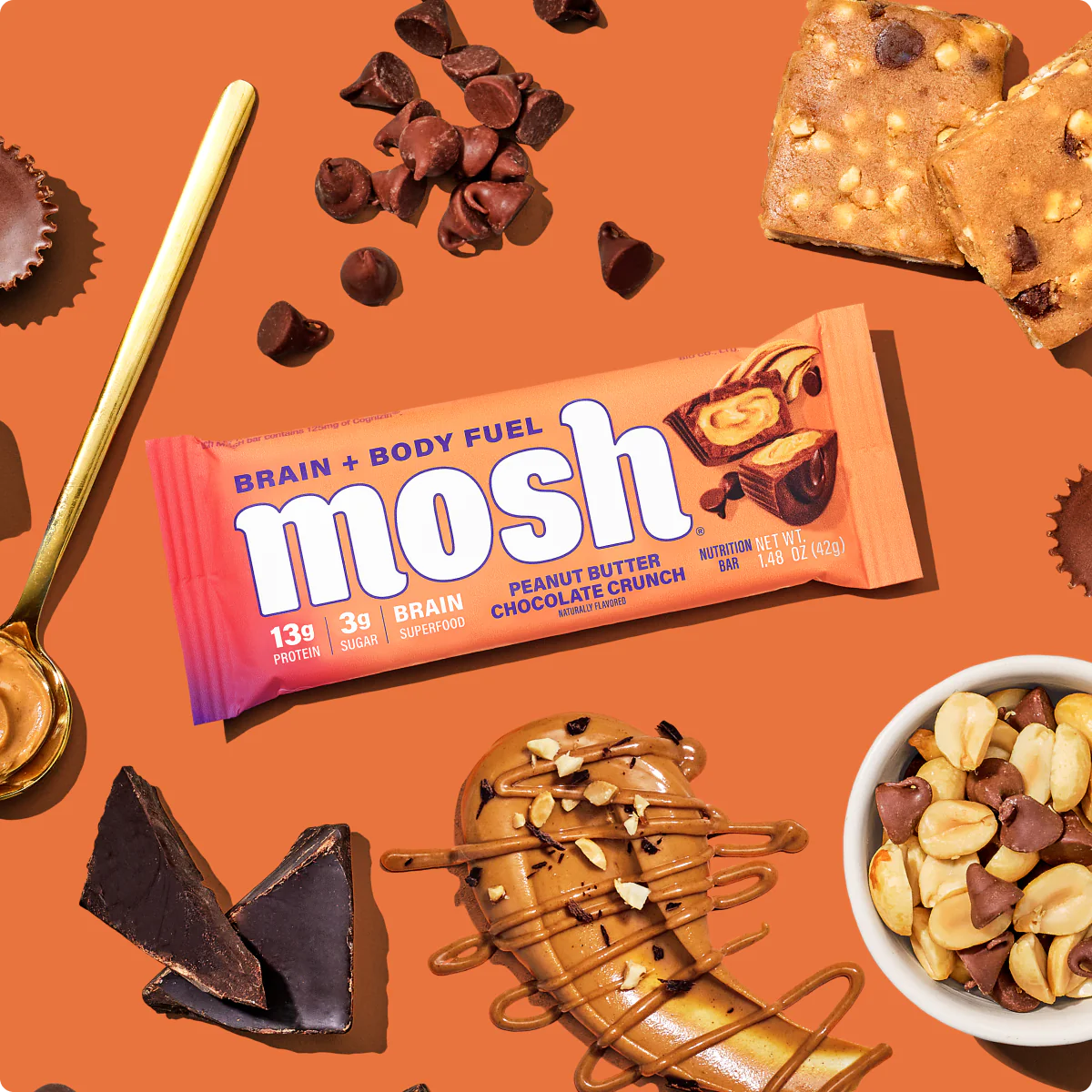
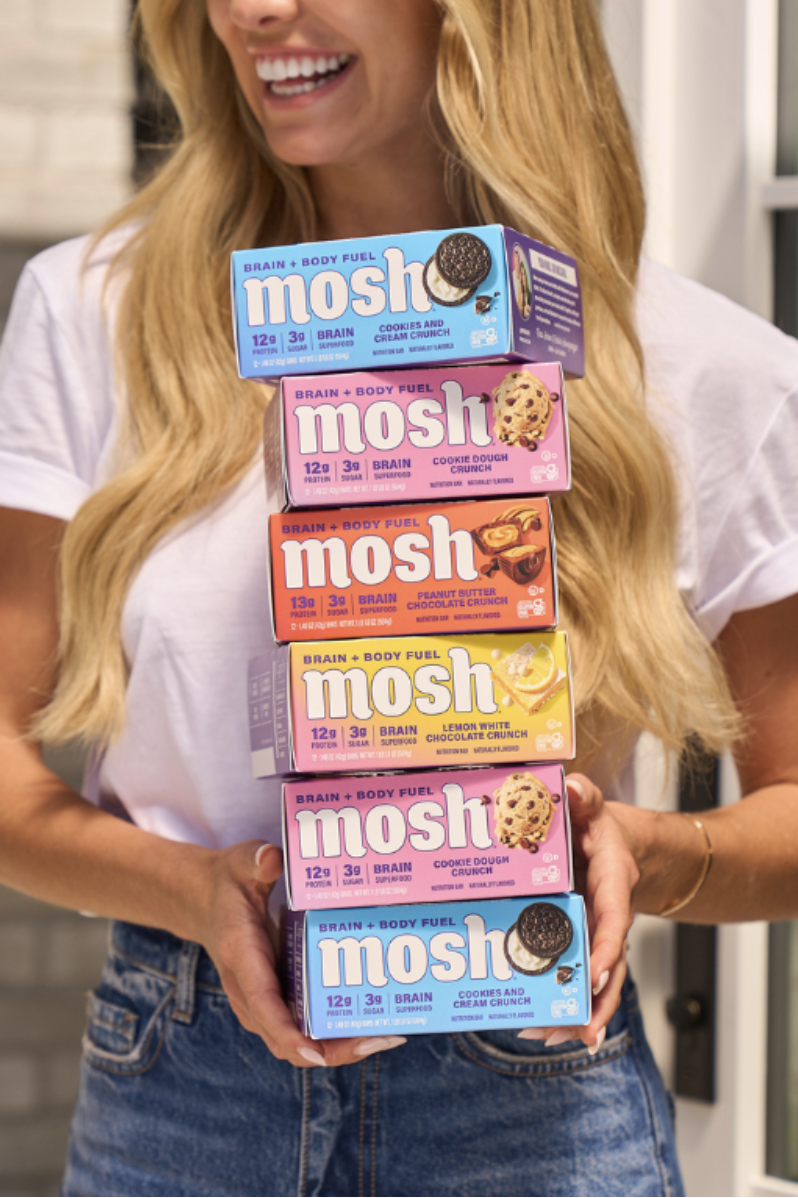
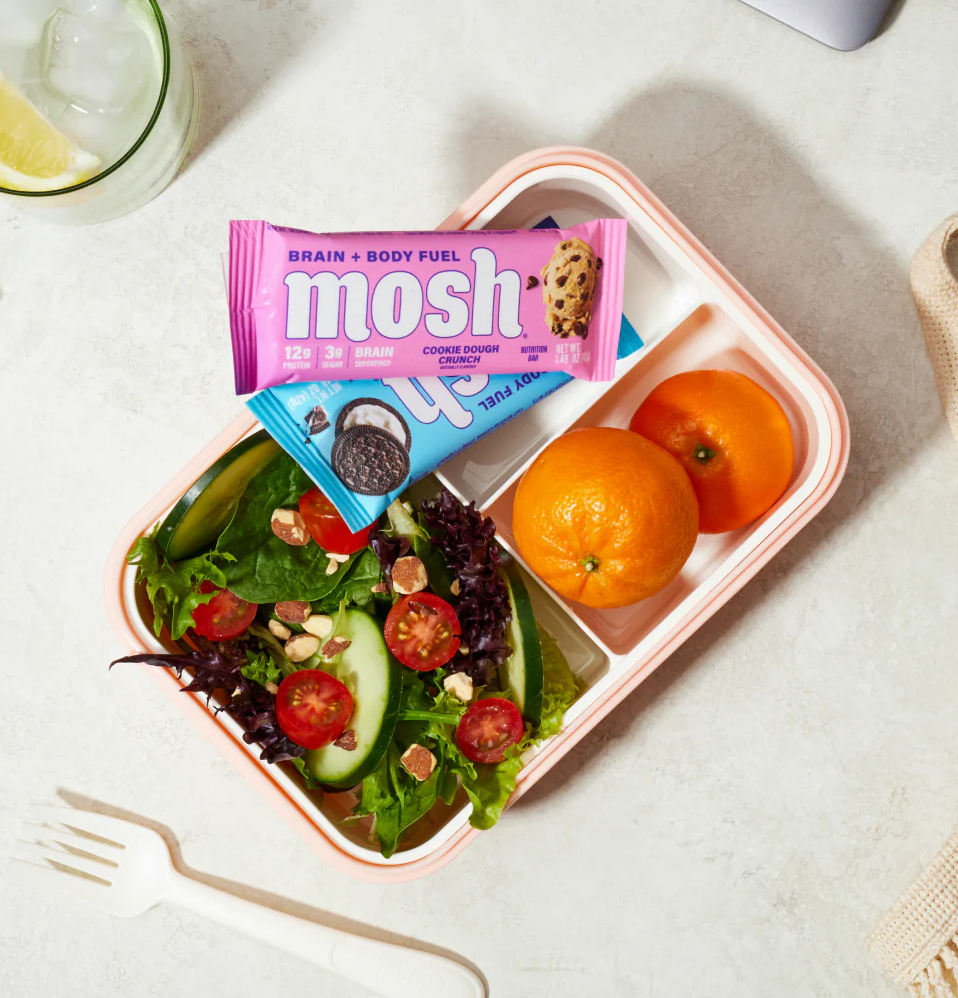
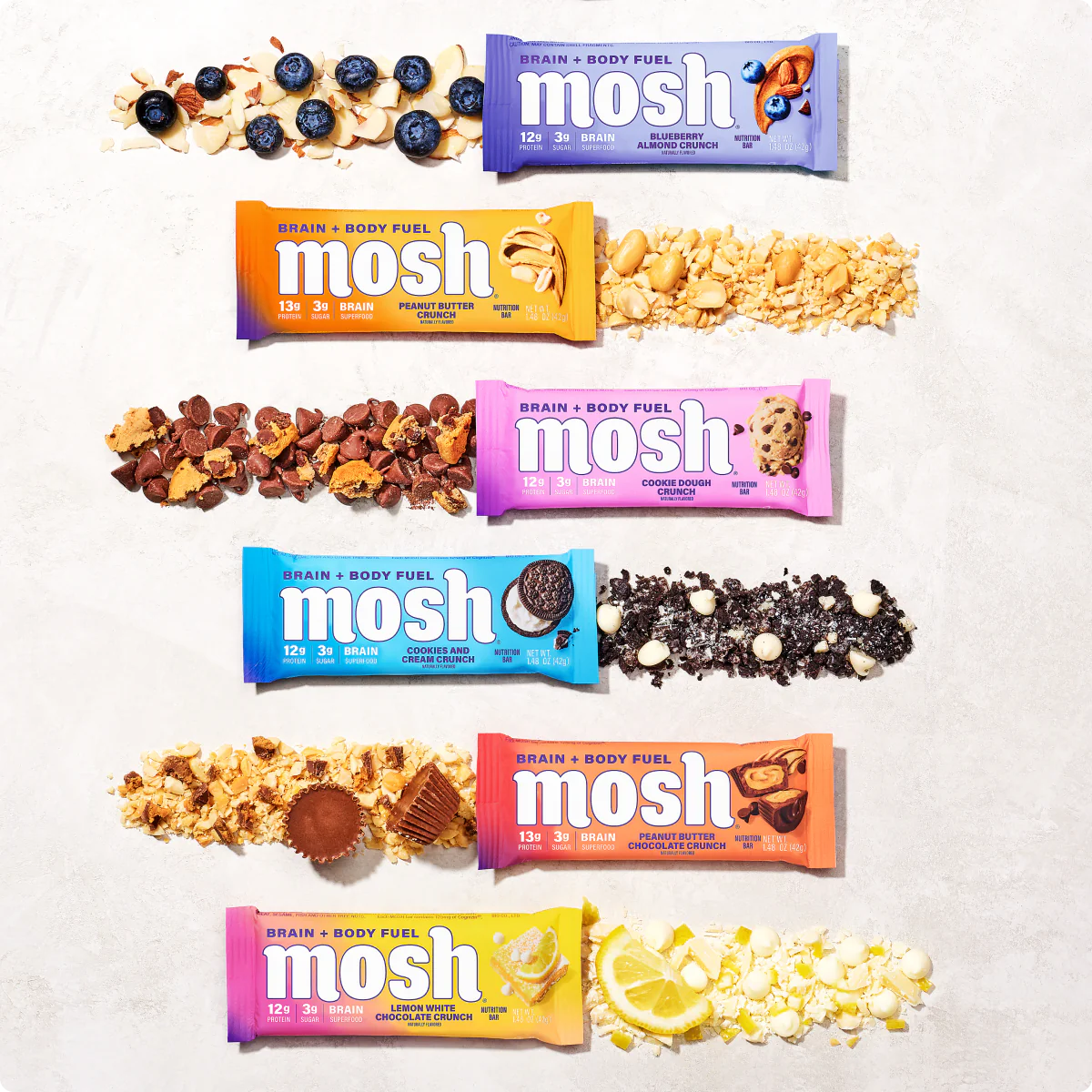


Comments and Discussion (Powered by the PricePlow Forum)